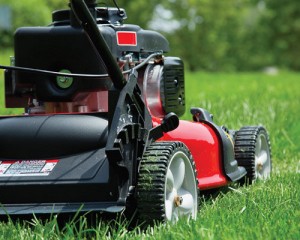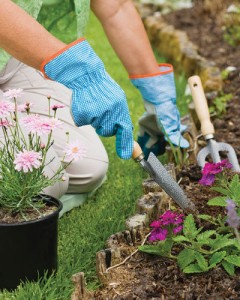You can truly be out in the garden during May, working the dirt, tending to early sprouts of plants and watching the beginnings of a colorful plot in your yard.
Time to plant
If you put cold weather plants in the ground last month, you may be itching to get started this month with beans, peas, tomatoes and peppers. Ohio’s typical last frost date falls around mid-May, but it may occur as late as mid-June. Once the fear of frost is over, it’s safe to plant if you haven’t already risked the chilly mornings.
Related: June’s gardening to-do list
Consider companion planting if you want to test how plants can benefit one another. Though there isn’t scientific data of the benefits that certain plants offer to one another, master gardeners acknowledge the obvious ways in which plants help to ward off pests or provide shade to help other plants grow.
Don’t throw out empty seed packets if you need the information provided on them. Penn State Extension recommends hanging on to them so you have basic care directions as well as future care and harvesting instructions. See packets also specify the life cycle of the plants, so you’ll know if they’re annuals, biennials or perennials.
Don’t bag grass clippings

Grass clippings break down quickly and are a source of nitrogen, according to Colorado State University Cooperative Extension Master Gardener Ruth Davis. Over time, the grass clippings could cut down on the amount of fertilizer you need to buy.
Keep in mind that grass clippings that are too long will mat and smother grass. Each time you mow, make sure that no more than a third of the length of the grass blades is being cut off.
Choose fertilizer
The type of fertilizer you need for your garden will depend upon your garden’s soil type and the plants you’re going to grow.
Ohio State University Extension says that plants need a range of nutrients to grow, develop and be productive. If plants do not receive a sufficient amount of any of the nutrients it needs to survive, the plant’s growth and development will be stunted. Nitrogen is the nutrient that is most often in demand in the soil. Phosphorus and potassium are also largely needed.
When purchasing fertilizer, note that each type will have three numbers printed on the bag. The numbers indicate the percentage of each nutrient present in the fertilizer. For instance, 12-12-12 fertilizer contains 12 percent nitrogen, 12 percent phosphorus and 12 percent potassium. The type of fertilizer you use should correlate with the type of plants being grown. OSU Extension recommends high-nitrogen fertilizers, like 12-12-12 or 15-15-15 for leafy vegetables. For vegetables that are grown for their fruit, roots, bulbs or seeds, use 6-24-24, 6-12-18 or 8-16-16.
OSU Extension advises gardeners to not put fertilizer in direct contact with seeds and roots. Instead, put fertilizer in furrows a few inches deep and a few inches from the rows where seeds will be sown.
Pest control
Without a doubt, wildlife will find its way into your garden. Determine the best strategy for your location, finances and type of nuisance. High fences are effective for keeping deer out of your vegetables. If rabbits and groundhogs are a problem, chicken wire fences must be buried several feet deep in the ground to prevent digging.
If fences aren’t an option, using materials with smells that repel animals or using repellents might work.
More about gardening:
- If weeds could talk April 24, 2015
- How to keep wildlife out of your garden April 14, 2015
- Sunlight requirements for growing vegetables April 10, 2015
- 5 tips for creating a pet-friendly garden March 24, 2015
- How to prepare tools for spring gardening Jan 13, 2015
- How to keep pests out of your garden July 15, 2014












